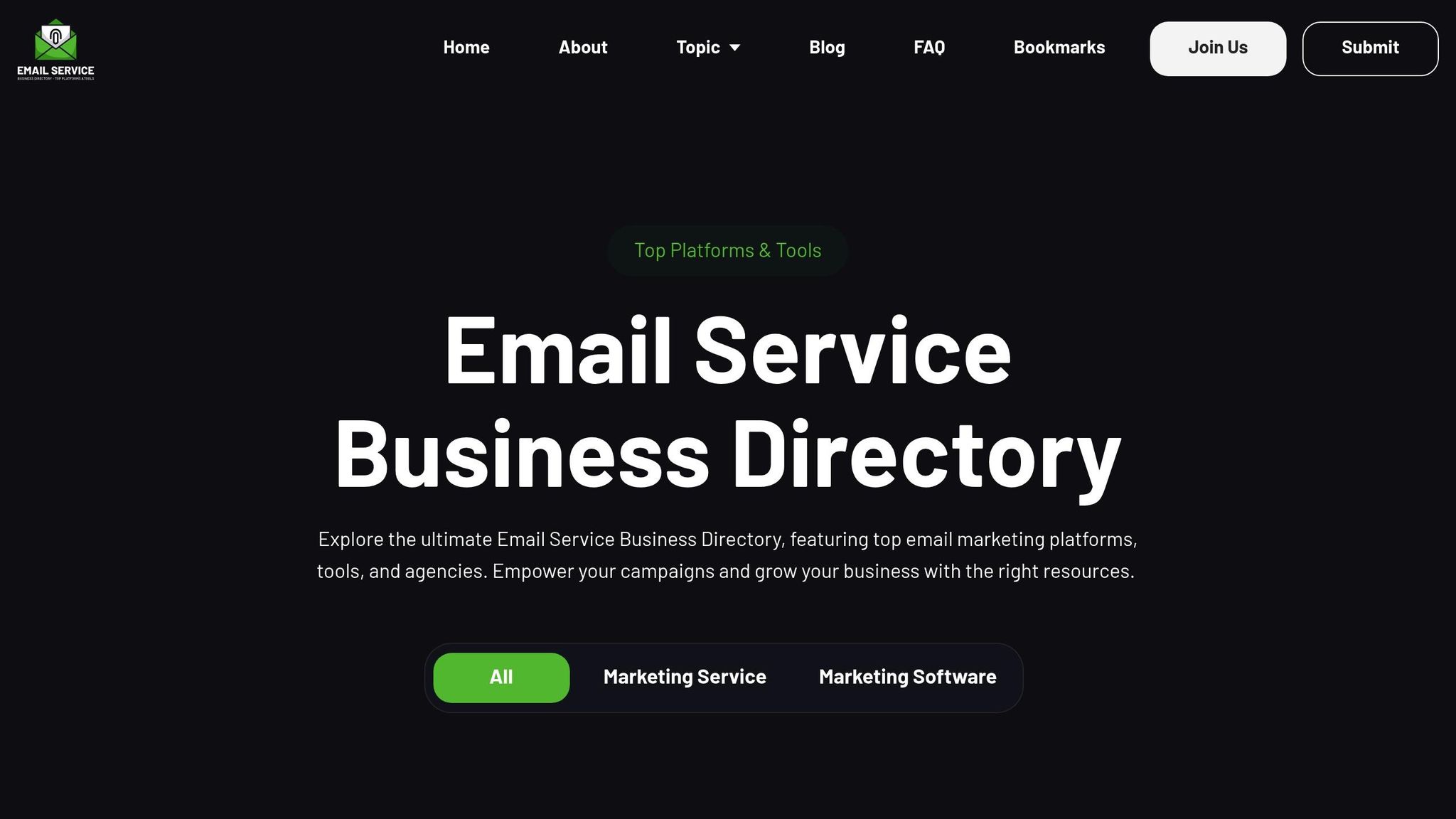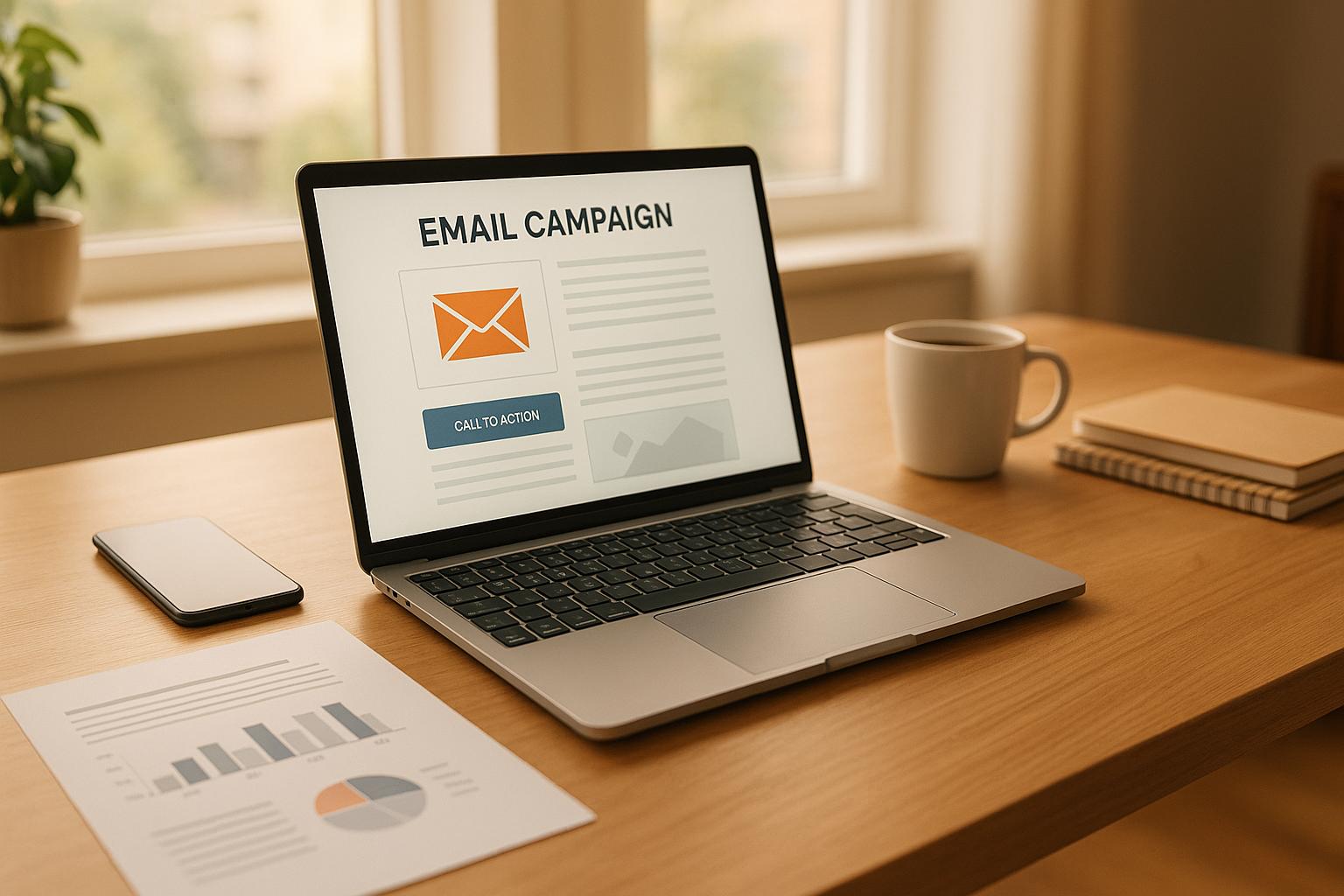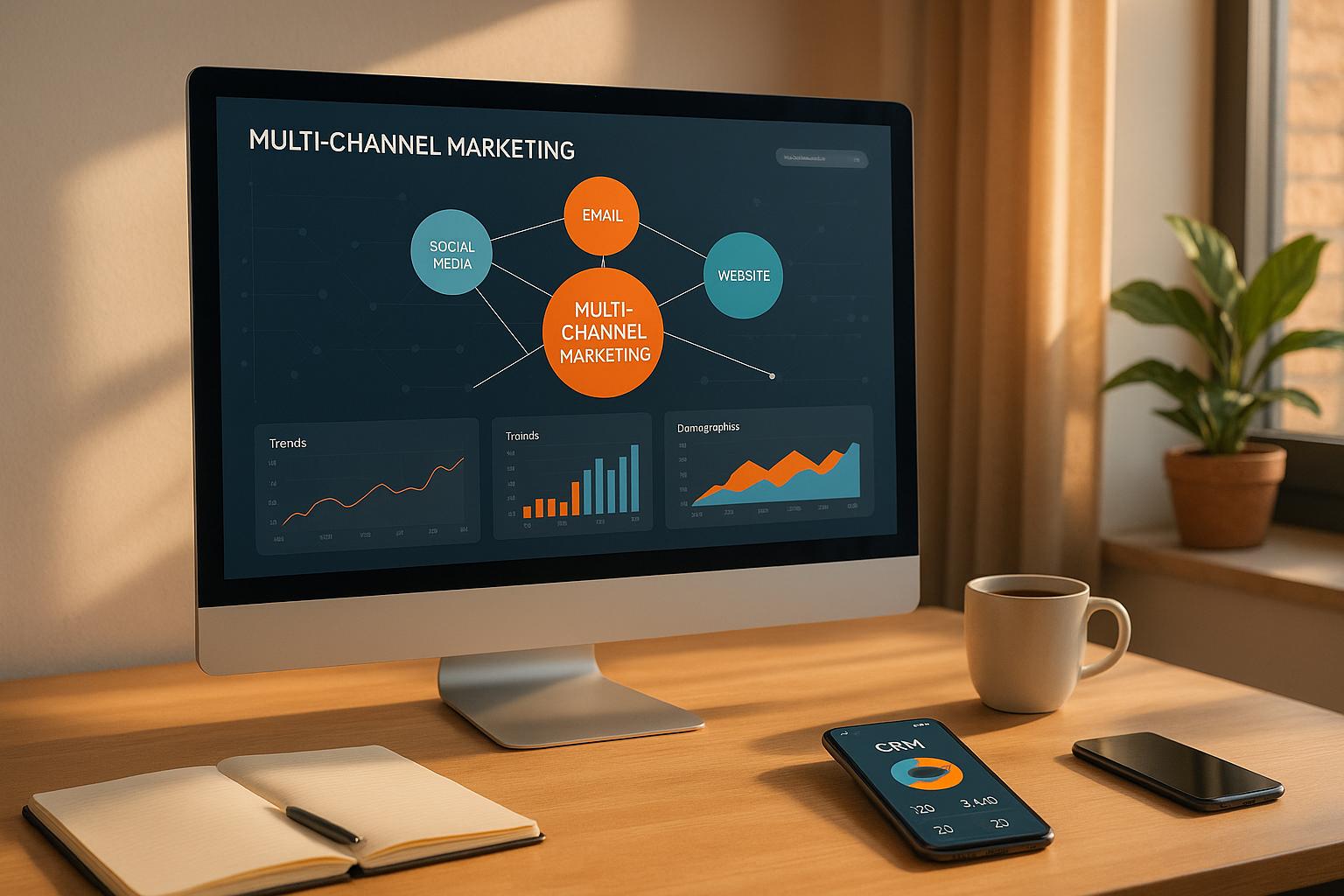When it comes to email deliverability, choosing between HTML and plain text emails can make a big difference. Here’s the short answer: plain text emails tend to perform better in deliverability because they are simpler and less likely to trigger spam filters. However, HTML emails offer better branding opportunities and engagement tracking. The right choice depends on your goals and audience.
Key Takeaways:
- Plain Text Emails: Easier to deliver, universally compatible, faster to load, but lack visual appeal.
- HTML Emails: Visually engaging, great for branding and tracking, but prone to spam filters and rendering issues.
Quick Comparison:
| Factor | HTML Emails | Plain Text Emails |
|---|---|---|
| Spam Filter Susceptibility | Higher risk due to complex code | Lower risk with simple text |
| Visual Appeal | High: Includes images and branding | Low: Text-only |
| Compatibility | Varies across email clients | Consistent across all platforms |
| Engagement Tracking | Advanced metrics available | Limited to basic metrics |
| Loading Speed | Slower due to images and media | Instant loading |
Pro Tip: Use plain text for personal, urgent, or transactional emails. Opt for HTML when visual design and detailed analytics are priorities. For the best results, test both formats on small segments of your audience to see what works.
HTML Emails: Features and Deliverability Impact
What Are HTML Emails?
HTML emails use HTML and CSS to create interactive, visually engaging messages. They allow for the inclusion of design elements like logos, custom fonts, colors, and even personalized content. This makes them a popular choice for marketing campaigns, newsletters, and promotional materials. With HTML emails, you can tailor messages to individual preferences while maintaining a consistent brand identity. But while they offer plenty of creative opportunities, they also come with challenges that can impact how well they reach your audience.
HTML Email Deliverability Problems
Deliverability can be a major concern for HTML emails. Issues like overly complex code, large numbers of images, or sloppy formatting can set off spam filters, pushing your carefully crafted email into the junk folder. Compatibility is another hurdle - different email clients handle HTML and CSS in varying ways, and some block images by default or strip out certain styles, leading to broken designs. Additionally, embedded elements like JavaScript or Flash are often unsupported and flagged as potential security risks by many email clients and security programs. Large file sizes, often caused by high-resolution images or intricate layouts, can also slow down load times and may even result in emails being blocked by some providers, especially on mobile devices.
When to Use HTML Emails
Despite these challenges, HTML emails are incredibly effective when visual impact and detailed tracking are key. They shine in campaigns where a strong visual presentation is critical - think product showcases with high-quality images or newsletters with structured, branded layouts. Their ability to include rich media and interactive elements makes them more engaging than plain text alternatives, often leading to better click-through rates and reader responses. HTML emails are particularly useful for promotional campaigns that rely on compelling calls-to-action or for newsletters that need to deliver a polished, professional look. Plus, the detailed analytics they provide can help you refine and improve your future campaigns.
Plain text emails VS HTML emails using an email tester
Plain Text Emails: Features and Deliverability Impact
While HTML emails bring visual charm, plain text emails stand out for their simplicity and reliability when it comes to deliverability.
What Are Plain Text Emails?
Plain text emails are exactly what they sound like - basic, unformatted messages made up of only text. They don’t include HTML code, images, or any kind of styling. Think of the kind of email you might send to a friend: just words, with line breaks and spacing used to organize the content. While they may seem old-fashioned compared to HTML emails, their simplicity and universal compatibility make them a staple in email marketing.
One of the biggest perks of plain text emails is their consistency. They display the same way across all email clients and devices, load instantly, and don’t rely on external resources. This makes them a go-to choice for transactional emails, urgent updates, or any situation where the message itself is more important than how it looks.
Plain Text Email Deliverability Benefits
Plain text emails excel in deliverability. Because they don’t include complex code or embedded elements, they’re less likely to trigger spam filters. Without hidden code, suspicious links, or deceptive formatting, these emails appear more trustworthy to both email providers and recipients.
Another advantage is their technical simplicity, which avoids common issues like broken images or rendering problems. These emails are lightweight, so they don’t burden email servers, which can help boost your sender reputation. Email providers like Gmail, Outlook, and Yahoo often treat plain text emails more favorably because they carry fewer risks.
Accessibility is another strong point. Plain text emails work seamlessly with screen readers and assistive technologies, making them inclusive for recipients with visual impairments. They also display reliably in preview panes and notification systems, where HTML formatting might be stripped away. This ensures your message reaches its audience without any technical hiccups.
Plain Text Email Drawbacks
The biggest downside of plain text emails is their lack of visual appeal. You can’t include logos, brand colors, or visually striking call-to-action buttons. This can make it harder to maintain consistent branding or grab attention, especially for businesses that rely on visuals to tell their story or showcase their products.
Tracking is another challenge. While you can measure basic metrics like open rates and clicks, plain text emails don’t offer the detailed analytics that HTML emails provide. You won’t be able to track which sections of your email performed best or gather deeper insights to fine-tune future campaigns.
Formatting is also limited. Without tables, varied font sizes, or distinct sections, everything relies on simple tools like line breaks, dashes, and capital letters. This can make longer emails harder to scan or overwhelming to read, especially if you’re trying to include complex information or multiple offers.
For promotional campaigns that thrive on visual elements, plain text emails often fall short. Without the ability to showcase products or create eye-catching layouts, these emails may not drive the same level of engagement or conversions as their HTML counterparts.
sbb-itb-6e7333f
HTML vs Plain Text: Deliverability Comparison
Both HTML and plain text emails have their strengths and weaknesses. Knowing how each performs in key deliverability areas can help you choose the right format for your email campaigns.
Here’s a quick comparison of the two formats across important deliverability factors:
Deliverability Comparison Table
| Factor | HTML Emails | Plain Text Emails |
|---|---|---|
| Spam Filter Susceptibility | More complex formatting and code can sometimes trigger spam filters | Simple text structure is often seen as more trustworthy by spam filters |
| Inbox Placement Rate | Lower placement rates can occur due to design elements and complex coding | Higher placement rates thanks to minimal formatting |
| Email Client Compatibility | Rendering varies across email clients and may not display well on older systems | Consistently compatible with all email clients and devices |
| Loading Speed | Slower loading due to images and external resources | Loads quickly since it’s just text |
| Engagement Tracking | Supports advanced tracking like click metrics and detailed analytics | Limited to basic metrics like opens and clicks |
| Accessibility | Requires careful coding for screen readers, which can be tricky to implement | Simple structure is easier for assistive technologies to process |
| File Size | Larger file size, which can impact deliverability if not optimized | Small file size reduces strain on servers |
| Authentication Issues | Complex coding can sometimes interfere with protocols like SPF, DKIM, and DMARC | Straightforward format works well with authentication protocols |
This breakdown highlights the strengths and limitations of each format, giving you a clearer idea of what might work best for your goals.
When to Choose Each Format
HTML emails are ideal when visual design and detailed performance tracking are priorities. Think product announcements, branded newsletters, or promotional campaigns. These emails shine when you need to showcase your brand’s personality and have a solid sender reputation to back it up.
Plain text emails, on the other hand, excel in situations where simplicity and deliverability matter most. They’re perfect for cold outreach, transactional messages, or urgent updates like password resets and order confirmations. Their straightforward nature often feels more personal and less likely to trigger spam filters, which is why many sales teams favor them for outreach.
For a balanced approach, you can start with plain text emails to build trust and establish a strong sender reputation. Once that’s in place, follow up with HTML emails to add visual appeal and advanced tracking capabilities.
Ultimately, the right format depends on your campaign objectives and deliverability goals. Choose the one that aligns best with your strategy and audience needs.
How to Improve Email Deliverability
When it comes to ensuring your emails actually reach your audience, following proven strategies is essential. The trick lies in understanding the nuances of each email format and applying the right techniques consistently. Let’s break it down, starting with HTML emails.
Improving HTML Email Deliverability
HTML emails are visually appealing but require careful technical execution. Start with clean, lightweight code to ensure smooth rendering across different email clients. Avoid external CSS stylesheets and unsupported JavaScript elements, as these can raise red flags with spam filters.
Images play a big role here. Make sure to optimize image file sizes for faster loading and include descriptive alt text. Striking a balance between text and images is key - too much of either can increase the chances of your email being flagged as spam.
Authentication is non-negotiable. Set up SPF, DKIM, and DMARC protocols to verify your sender identity. These measures build trust with inbox providers and improve your chances of landing in the inbox instead of the spam folder.
Before hitting send, test your HTML emails across various devices and email clients using specialized tools. And don’t forget about your preheader text - this small snippet can significantly boost open rates when done right.
Improving Plain Text Email Deliverability
Plain text emails might seem simpler, but they still require attention to detail. Start by keeping your email list clean - remove bounced addresses and segment out inactive contacts. A healthy, engaged list signals to ISPs that you’re a reliable sender.
Personalization can make your emails feel more genuine. Including the recipient’s name or other relevant details works well, but don’t overdo it - excessive personalization can feel forced.
Focus on making your content easy to read. Use short paragraphs, strategic line breaks, and avoid overusing capitalization or punctuation, as these can come across as spammy.
Timing is another factor that affects engagement. Experiment with different send times to find out when your audience is most likely to respond, and adjust your schedule accordingly. And, of course, always comply with anti-spam laws like the CAN-SPAM Act by including an unsubscribe link and accurate contact information.
Using Email Service Business Directory for Better Deliverability

If you’re looking for tools to help you implement these strategies, the Email Service Business Directory is a great place to start. This platform lets you compare email marketing solutions that focus on high deliverability. Look for features like strong authentication, detailed analytics, and reputation monitoring to ensure your emails consistently reach their intended audience.
Conclusion: Picking the Right Email Format
Selecting the right email format depends on your goals and understanding your audience. Each format has its strengths, and using them effectively can significantly impact your engagement and deliverability rates.
When it comes to HTML emails, they’re ideal for campaigns that rely on visual appeal. Think product showcases, multi-section newsletters, or promotional materials where design and branding take center stage. These emails are perfect for e-commerce and visually driven content but require technical know-how and adherence to coding standards to ensure they land in inboxes rather than spam folders.
On the other hand, plain text emails excel in creating a personal, authentic connection. They’re a great fit for one-on-one communication, follow-ups, or professional updates. Their simplicity can feel more genuine, but their success hinges on proper email authentication, maintaining clean subscriber lists, and following best practices.
Your audience also plays a big role in this decision. For instance, B2B recipients often prefer the straightforward, personal nature of plain text emails, while B2C audiences might engage more with the visual storytelling power of HTML. To make an informed choice, experiment with both formats on small audience segments to see which drives better engagement and deliverability.
Many marketers find success by combining both formats. For example, a welcome email might begin with plain text to establish a personal connection and then transition to HTML for visually engaging product highlights. By understanding your audience and tailoring your approach, you can choose the format that delivers the best results for your campaigns.
FAQs
Should I use HTML or plain text emails to improve deliverability for my audience?
Choosing between HTML emails and plain text emails depends largely on your goals and what your audience prefers.
Plain text emails often perform better in terms of deliverability because they’re less likely to be flagged by spam filters. They also feel more personal and are perfect for audiences who value straightforward, no-frills communication.
On the flip side, HTML emails work best when you want to highlight visuals, reinforce your branding, or include interactive features. Keep in mind, though, that their complexity can sometimes affect deliverability. For most U.S. audiences, a simple approach - either plain text or lightly formatted HTML - usually balances engagement and deliverability effectively.
How can I optimize HTML emails to improve deliverability and avoid spam filters?
To make sure your HTML emails reach your audience and don’t end up flagged as spam, start by authenticating your emails with SPF, DKIM, and DMARC protocols. These protocols confirm your identity as a legitimate sender, which is crucial for building trust with email providers.
Focus on maintaining a strong sender reputation by delivering content that’s relevant and engaging to recipients who are genuinely interested. Avoid sending emails to inactive or unverified addresses, as this can hurt your credibility.
When designing your email, stick to clean, standards-compliant HTML with a width of 600–800 pixels. Avoid going overboard with spam trigger words, and aim for a balanced image-to-text ratio. This ensures your email is both visually appealing and easy to read without relying too heavily on images.
If you’re using a new IP address, warm it up gradually by slowly increasing the volume of emails you send over time. And here’s a key tip: steer clear of purchased email lists. These lists often contain outdated or unverified contacts, which can damage your sender reputation and decrease deliverability.
By sticking to these practices, you’ll improve your chances of reaching your audience’s inbox and making a stronger impact with your email campaigns.
What are the best practices for using both HTML and plain text in the same email campaign?
To seamlessly integrate HTML and plain text in an email campaign, use a MIME multipart message. This method includes both formats, letting email clients choose the most suitable version for the recipient. Keep the plain text version straightforward and aligned with the HTML content to provide a consistent experience. This strategy not only improves email deliverability but also ensures a more accessible and user-friendly experience for all recipients.


